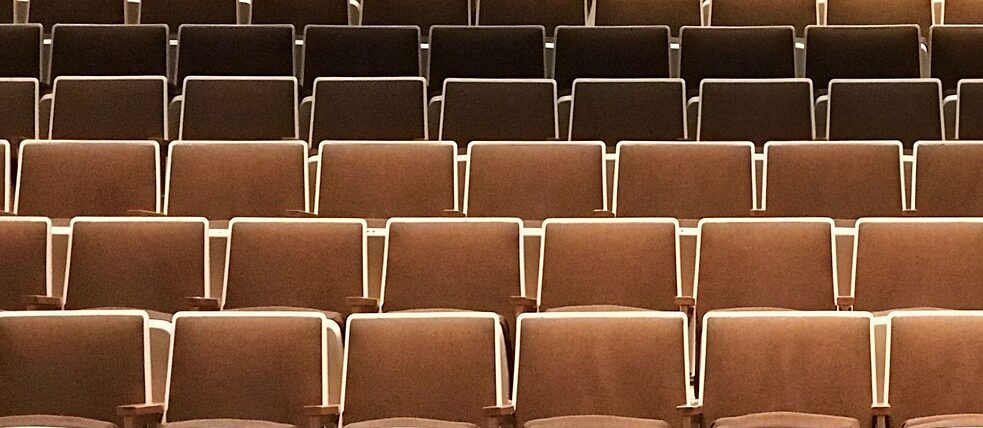German Theatre
Prologue: Stay Six Feet Away!

Cultural Programs Curator and blogger Lena Kuhnt addresses the challenges and opportunities that Germany’s performing arts scene faces today, including reactions to the pandemic and their implications.
By Lena Kuhnt
Unlike other cultural institutions, such as museums and galleries, German theatres must remain closed until the end of this season. The intimacy of the theatre contributes to its appeal, but in these times it also poses a risk. Its space is too condensed, its seats too compact, the bodies on its stage much too close – now, the theatre as we presently know it screams risk of contagion.
So, how can theatres react to the current situation: aesthetically and structurally? Currently in Germany, theatres and their productions are governed by restrictions ordered by the German health ministry. Actors on stage are required to stay at least six feet away from each other. If their role requires them to scream or sing, the physical distance to their co-actors increases to twenty feet. In the auditorium, the audience can only occupy every third seat. During intermissions, spectators are not allowed to gather in one room – they are dispersed in different parts of the building according to the seat number on their tickets.
But the performing arts are, per se, defined by physical interaction between people. Between actor and actor, spectator and actor, spectator and spectator. No two performances, even of the same production, are alike – each performance varies from night to night because of the different dynamics and atmosphere that interaction between humans evokes. The theatre is a meeting place, a place of exchange. Considering this self- and public image, how could the future of the performing arts look, and how will they adapt to current and future circumstances?
Streaming recordings of existing performances online is merely a placeholder. Many German theatres even refrain from this option. Some have considered opening their next season with plays that directly address themes of pandemic, like Camus’ La Peste. Others say that this approach is not sufficient – theatre has always been a mirror of society, so new plays need to be written, plays which address how this crisis in this specific time is impacting society, politics, and life overall. Some are already considering how participation could possibly be increased by creating productions specifically adapted for the virtual space – moving away from static hierarchies between artistic director, producer, and actor in state theatres, and involving the spectator in this creation process.
A crisis is not only defined by devastation – its inherent element is creation. As such, the German performing arts scene is taking this crisis as an opportunity to look inward at its image, work habits, structure, mission, and role in society. I am curious about the various paths German theatre practitioners and institutions will take in the near future and thrilled to present some of those outcomes and discourses to you in this blog.